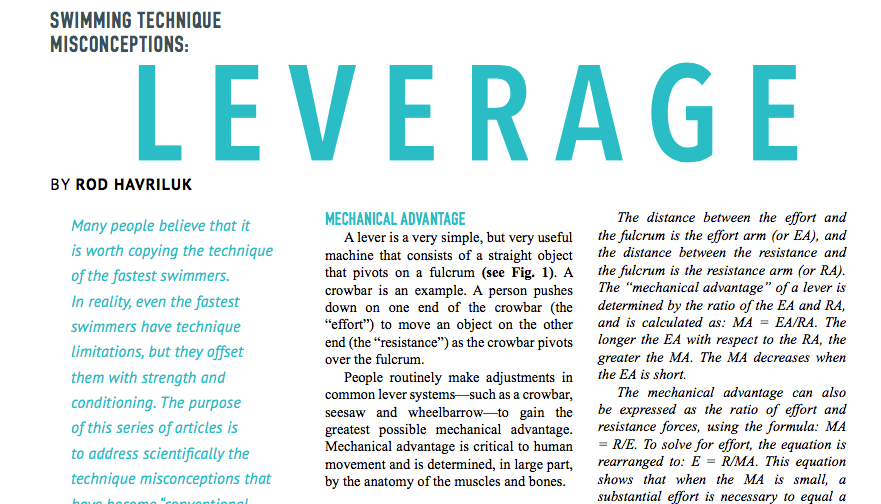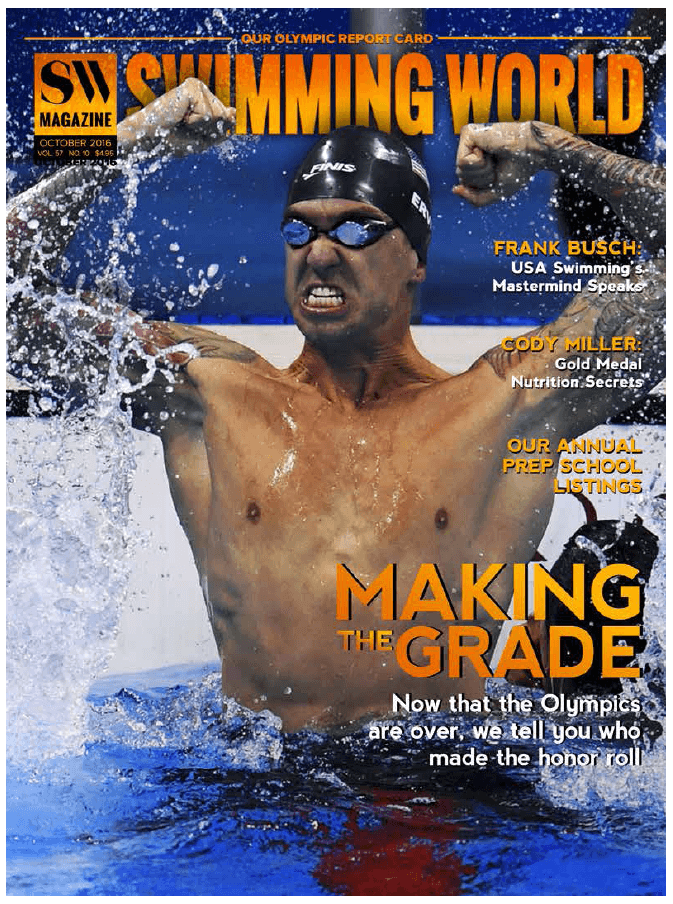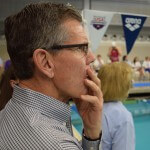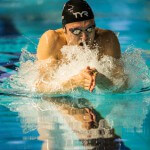Swimming World Presents Swimming Technique Misconceptions: Leverage

Swimming Technique Misconceptions: Leverage
Many people believe that it is worth copying the technique of the fastest swimmers. In reality, even the fastest swimmers have technique limitations, but they offset them with strength and conditioning. The purpose of this series of articles is to address scientifically the technique misconceptions that have become “conventional wisdom,” and to present options that are more effective.
The difference between muscular force and applied force is due to the mechanical advantage (actually, disadvantage) of the lever system of the human body. The inherent and extreme mechanical disadvantage of these levers makes it essential for a swimmer to adjust angles whenever possible to improve the mechanical advantage.
Dr. Rod Havriluk is a sports scientist and consultant who specializes in swimming technique instruction and analysis. His unique strategies provide rapid improvement while avoiding injury. Learn more at the STR website, or contact Rod through info@swimmingtechnology.com.
To read more about Havriluk’s take on leverage check out the October issue of Swimming World Magazine, available now!
Total Access Members Can Visit the Swimming World Vault and Download Now!

Not a subscriber? Swimming World Magazine gives you unlimited access to all online content on SwimmingWorldMagazine.com and access to all of the back issues of Swimming World Magazine dating back to 1960! To Access everything in the Swimming World Magazine Vault, Subscribe With This Special 3-Year Offer!
Order a single “Collectors” issue print copy here or download a single .pdf copy here
FEATURES

014 RIO RETROSPECT: HOLY SMOKES!
by Annie Grevers
Frank Busch, USA Swimming’s national team director, offers his take on the Rio Games—the good, the bad and the ugly.

016 RIO REPORT CARD
by David Rieder
Nearly 900 swimmers from 173 countries competed in this summer’s Olympic Games in Rio de Janeiro. How did some of the different nations of the world perform? How did Rio 2016 measure up to expectations? What does the future hold for competitive swimming? Swimming World gives you the answers.

021 “IT’S TIME!”
by Annie Grevers
It’s been 20 years since the Summer Games have been on U.S. soil, and threetime Olympian Janet Evans is on a mission to end that Olympic drought.

022 SHOW ME THE MONEY
by Annie Grevers
There’s plenty of room for financial growth among professional swimmers in the United States.

030 NUTRITION: AROUND THE TABLE WITH CODY MILLER
by Annie Grevers and Tasija Korosas
After Olympic gold and bronze medalist Cody Miller spoke with a nutritionist and developed a healthier diet, he has seen stark improvement in recovery time after practices, and he’s detected more energy toward the end of the week after logging many miles of hard breaststroke.
COACHING
009 EARLY-SEASON SETS: SETTING THE STAGE
by Michael J. Stott
Long before the first day of high school practice—whether it be fall, winter or spring—coaches are hard at work mapping out team organization, season plans and daily sets. Here’s a sample workout that Miramonte (Orinda, Calif.) High School’s Coach Don Heidary uses to help roll his swimmers back into the rigors of the high school season.
010 LESSONS WITH THE LEGENDS: GEORGE BREEN
by Michael J. Stott
012 SWIMMING TECHNIQUE MISCONCEPTIONS: LEVERAGE
by Rod Havriluk
While it is true a swimmer must exert considerable effort to begin the pull, it is not true that the effort produces considerable propulsion. In actuality, the perceived muscular effort (force) does not directly equate to the force applied to the water. The difference between muscular force and applied force is due to leverage—technically, the “mechanical advantage” of a lever.
042 Q&A WITH COACH RANDY ERLENBACH
by Michael J. Stott
043 HOW THEY TRAIN STEPHEN HOLMQUIST & HUGO SYKES
by Michael J. Stott
TRAINING
025 DRYSIDE TRAINING: STRONGER FLIP TURNS
by J.R. Rosania
JUNIOR SWIMMER
039 GOLDMINDS: CAN YOU REALLY CHANGE?
by Wayne Goldsmith
YES, you can! Follow these 10 tips, and you’ll be on your way to becoming an even better swimmer. START TODAY!
045 UP & COMERS
by Taylor Brien
COLUMNS & SPECIAL SECTIONS
008 A VOICE FOR THE SPORT
026 HOLIDAY GIFT GUIDE
032 PREP SCHOOL DIRECTORY
046 GUTTER TALK
048 PARTING SHOT




Tease!!!
That’s what I said, but I found a link to a video (I almost never sit through a video, but I forced myself) … that was not enough to learn a whole lot – a stronger tease it was.
Since I used Phelps as my biggest example on my webpage covering butterfly technique, I had to watch Havriluk’s youtube video “… Don’t swim like Phelps”. I think Havriluck’s “science” is important but I have some, maybe minor, possible differences. He uses Phelp’s deep descent (compared to arm motion) in butterfly after recovery as putting stress on shoulders for the average guy. This is fine except if you have an upper body like Phelps, as some do, then the deep descent with respect to the arms can work pretty good. Havriluk may be primarily referring to the straight arm entry (as being bad) as opposed to diving arms. He does not refer to the “early vertical forearm” technique as being the target of his conventional wisdom criticism, but it seems like it here. Phelp’s hand motion after entry is similar to almost all the good flyers now (as least compared to what used to be over ten years ago). Contrary to what Havriluk said, I do not believe this is a wasted period where force should be immediately applied. I wouldn’t call it a half glide either, maybe a needed period of semi-rest. If the arms shot down fast and first, literally everything would be thrown off. Swimmers should definitely not try to copy all exactly from one person (and Phelps, with body and skill, is particularly unique) but the general things he is doing in butterfly are worthy, and common (more swimmers now breath every stroke after his success with it). Swimmers have to customize technique according to their body and style, and results.
Havriluk pointed out flaws in Phelp’s symmetry in freestyle and that is important. The correction is to have his bad side operate (ironically?) in the conventional manner. I do see a lot of swimmers, sometimes the fasted ones too, swim freestyle obviously out of symmetry. I don’t expect that anyone is copying it, but it does give one the OK to puposefully swim that way if they are already. Even though they probably shouldn’t. Look at Katie Ledecky’s often dragging legs when she’s setting yet another world record at her best (?) distance. Her legs sometimes look as if they are under no control, her mind is not even aware of them – emulate or not? Don’t try that in butterfly, unless you’re on you’re way to Catalina, or crossing some other channel 🙂